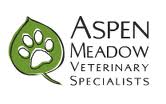

Dana Dietrich, DVM
Emergency Veterinarian
Difficulty breathing is a common emergency encountered by veterinarians in small animal medicine. Getting your pet to a veterinarian quickly, so they can identify and address this life-threatening problem, will increase the likelihood of a positive outcome. Evaluating the animal’s breathing pattern can help determine if he or she is having difficulty because of problems with the nasal passages or trachea, chest cavity disease, or lung disease. After the initial evaluation, the veterinarian will perform testing and provide oxygen supplementation.
Listening to the animal’s chest, evaluating the breathing pattern, and a thorough history can help localize the problem. The upper airway includes the nasal passages, the throat, or the trachea (the windpipe). Upper airway distress can be caused by nerve damage to the airway opening in the throat, windpipe compression, foreign bodies, cancer, infection, trauma, and polyps, to name a few. Animals with trouble breathing due to upper airway distress can have noisy breathing, decreased airflow through the nasal passages, neck extension, blue gums, and an elevated body temperature. Nasal discharge can be clear, green, and/or bloody. Trouble breathing due to the upper airway can lead to fluid accumulation within the lungs or even pneumonia. Treatment includes oxygen supplementation, sedation, temperature monitoring, fluids, and anti-inflammatories. If there is no response to this initial treatment, the animal may need to have a tube placed into the airway to assist with breathing.
Chest cavity disease includes collapsed lungs, fluid surrounding the lungs, cancer, and/or organs normally found within the belly that have pushed through the diaphragm and are compressing the lungs. For collapsed lungs or fluid compressing the lungs, treatment involves inserting a needle into the chest to remove the air or fluid. At times a chest tube may need to be placed.
Lung disease includes asthma, pneumonia, heart failure, and fluid accumulation within the lungs secondary to trauma. Findings on physical examination can include trouble breathing, coughing, and in cases of pneumonia, a fever. Treatment depends on the cause of the lung disease. Treatment of asthma includes oxygen therapy, medication to help open the airways within the lungs, anti-inflammatories, and antibiotics. Treatment for pneumonia includes oxygen therapy, medication to help open the airway within the lungs, nebulization, coupage, and antibiotics. Nebulization provides hydration to the respiratory tract by delivering sterile water the lungs. Medication to help open the airways within the lungs can also be delivered by nebulization. Coupage is a technique performed to help loosen secretions within the lungs that cause coughing to aid in removing the secretions from the lungs. Treatment for heart failure includes oxygen therapy and medication to help remove fluid from within the lungs. Treatment for fluid accumulation within the lungs due to trauma includes oxygen therapy, fluids, medication to help open the airways within the lungs, and pain medication. Animals with trouble breathing due to lung disease may need to be placed on a machine to assist with breathing until the lungs have time to heal.
Trouble breathing is a true medical emergency and evaluation by a veterinarian as soon as possible is essential to try and achieve proper treatment and a continued quality of life.
Dr. Dana Dietrich is an emergency clinician at Aspen Meadow Veterinary Specialists. AMVS is a 24-hour veterinary facility providing specialty internal medicine, surgery, neurology, oncology, emergency and critical care, physical rehabilitation, and blood bank services for pets. They are located in Longmont at 104 S. Main St. For more information, go to www.AspenMeadowVet.com [1]